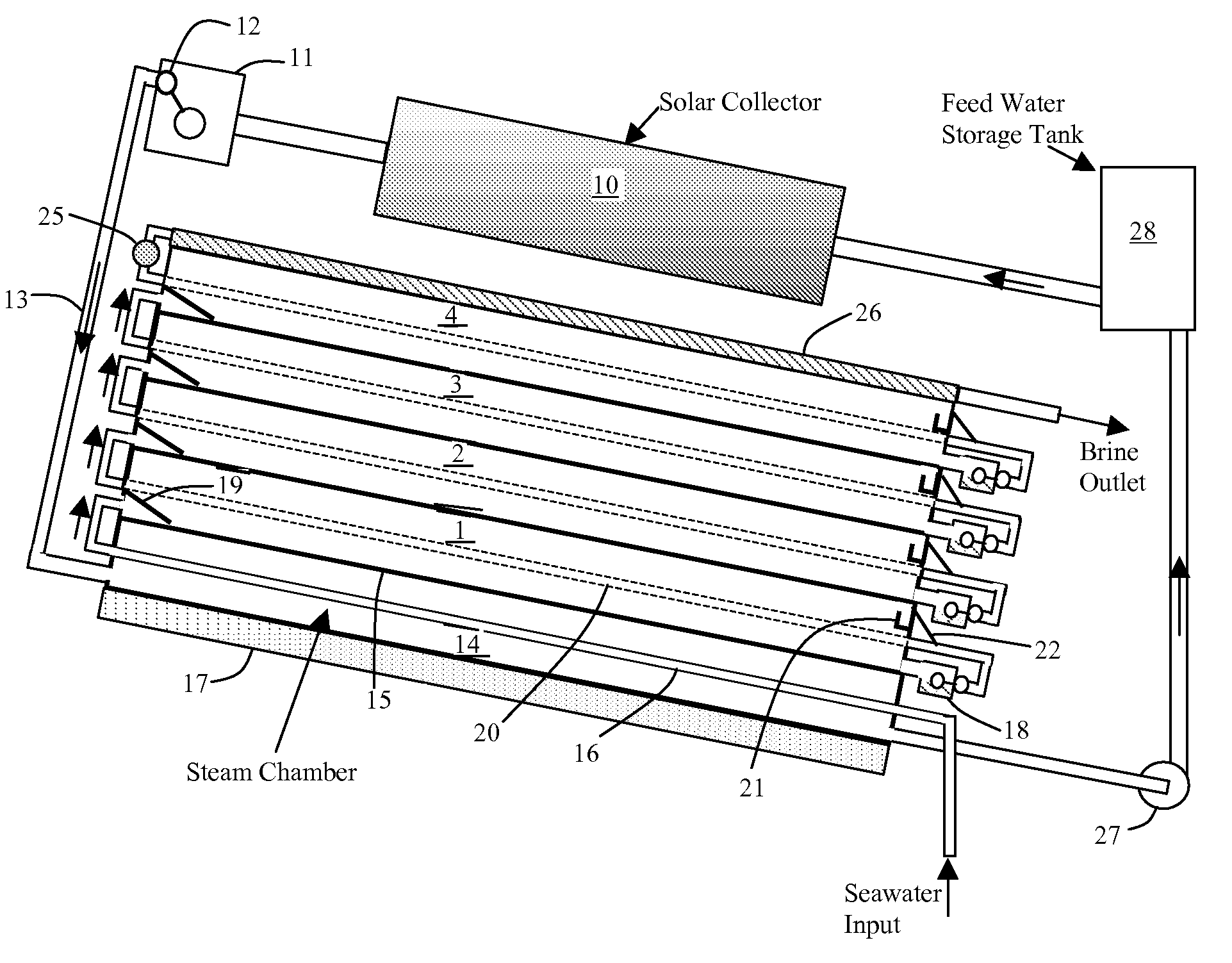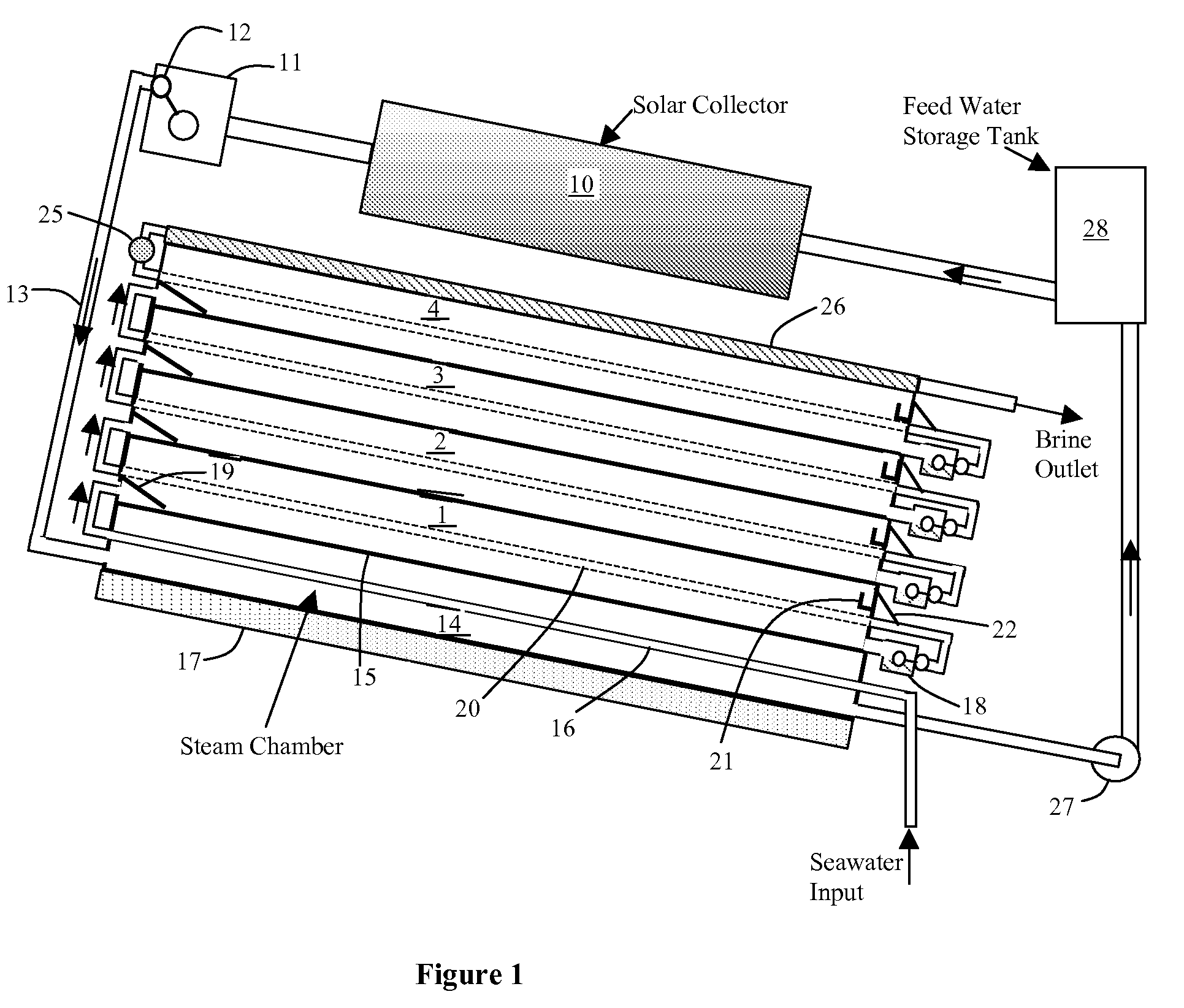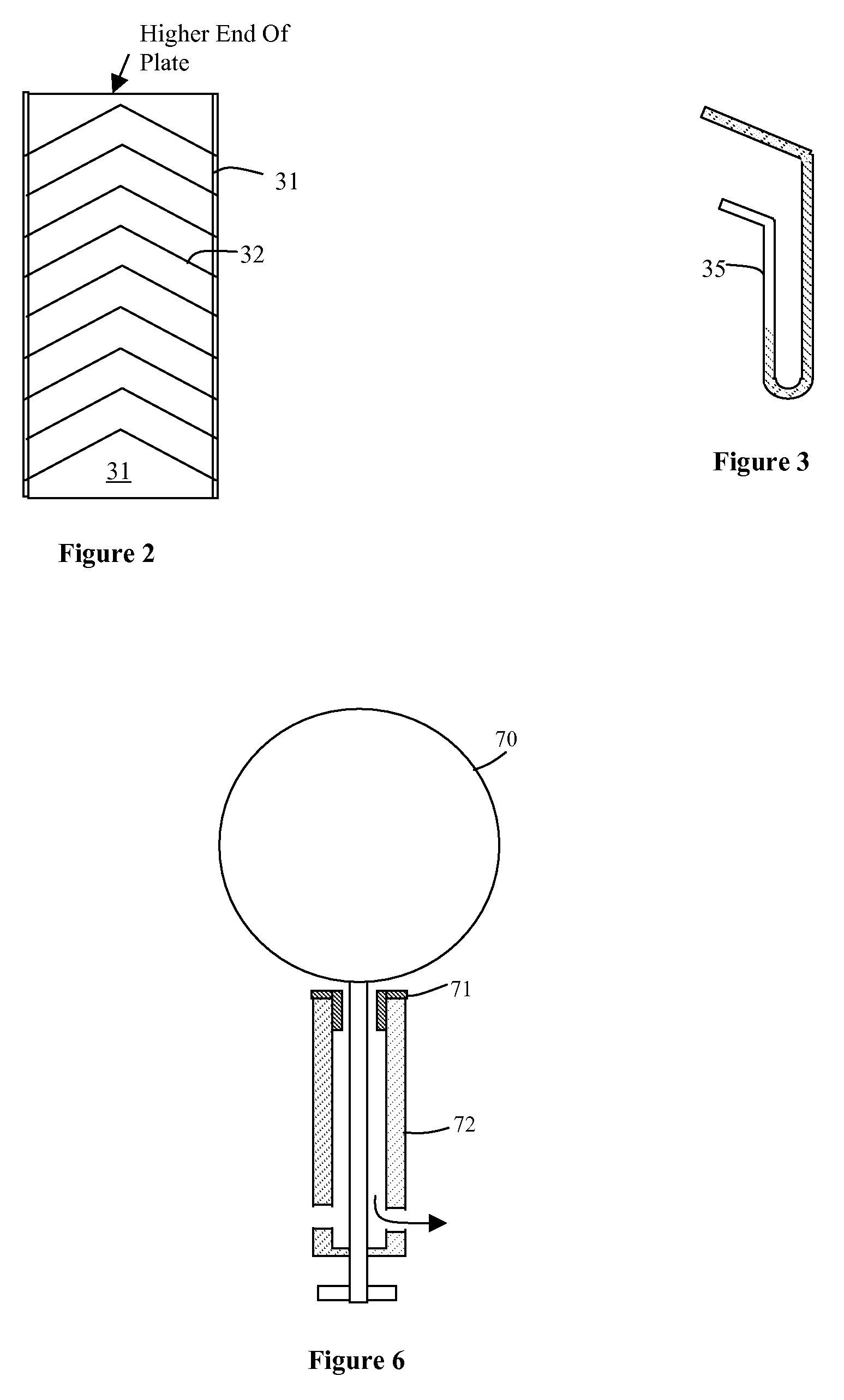Solar-powered desalination system
a desalination system and solar energy technology, applied in the field of solar energy desalination system, can solve problems such as system complexity, and achieve the effects of efficient desalination water, efficient use of heat supplied, and elimination of excessive number of pumps
- Summary
- Abstract
- Description
- Claims
- Application Information
AI Technical Summary
Benefits of technology
Problems solved by technology
Method used
Image
Examples
Embodiment Construction
[0024]FIG. 1 shows a schematic of this embodiment of SunDesal. For small systems, the solar collector could be a solar trough or even a flat solar collector. For large desalination plants, solar trough collectors or a conical collector called “Suncone” can be used to generate steam. For conditions in which the water does not reach the boiling point (100° C.), steam can still be generated at lower temperatures by lowering the pressure.
[0025]The SunDesal unit consists of a number of flat plates that separate the stages of the unit. The first stage (bottom stage) is the hottest, and each stage above that is progressively cooler. The top stage is cooled by evaporation of water that flows down the evaporation tray, or it can be cooled by cold water flow.
[0026]In FIG. 1, heat is collected by the solar collector 10. A steam control unit 11 has a float valve 12, which prevents the heated fluid from going to the desalination unit until the fluid becomes vapor. That is, at startup, the solar ...
PUM
| Property | Measurement | Unit |
|---|---|---|
| Temperature | aaaaa | aaaaa |
| Hygroscopicity | aaaaa | aaaaa |
| Pressure | aaaaa | aaaaa |
Abstract
Description
Claims
Application Information
 Login to View More
Login to View More - R&D
- Intellectual Property
- Life Sciences
- Materials
- Tech Scout
- Unparalleled Data Quality
- Higher Quality Content
- 60% Fewer Hallucinations
Browse by: Latest US Patents, China's latest patents, Technical Efficacy Thesaurus, Application Domain, Technology Topic, Popular Technical Reports.
© 2025 PatSnap. All rights reserved.Legal|Privacy policy|Modern Slavery Act Transparency Statement|Sitemap|About US| Contact US: help@patsnap.com



